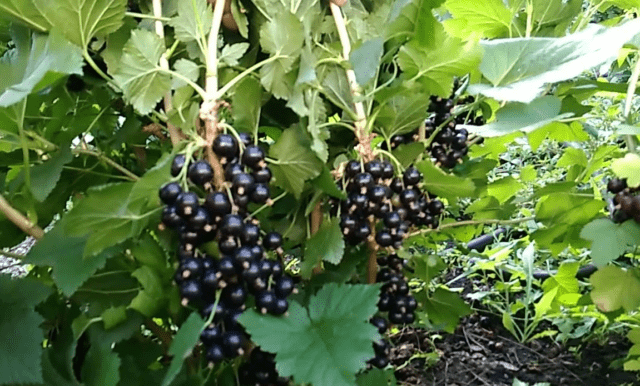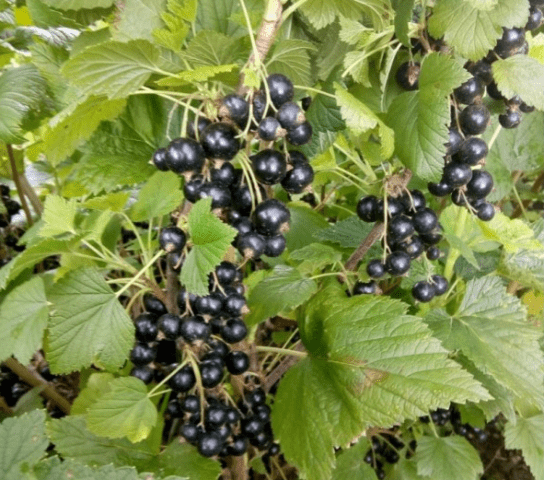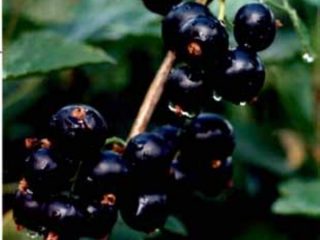Content
Black currant Ruben is a Polish winter-hardy variety suitable for growing in most regions of Russia. Produces tasty, juicy berries and fragrant leaves suitable for drying. Differs in stable productivity and undemanding growing conditions.
Breeding history
The Ruben black currant variety is the result of Polish selection, which has spread in Ukraine and Russia. Received on the basis of the Institute of Horticulture and Floriculture. The varieties Ben Lomond and Belorusskaya Sweet are taken as a basis. Not included in the Russian register of breeding achievements.
Synonyms for the name of the black currant variety Ruben:
- currant;
- northern grapes;
- wig;
- moss.
According to its properties, Ruben currants are considered absolutely identical to the varieties:
- Jubilee Digging;
- Beauty of Lviv;
- Black Sofievskaya.
Refers to medium early specimens suitable for traditional and industrial cultivation.
Description of the variety of black currant Ruben
Black currant Ruben is a medium-sized variety, reaching 150-200 cm in height. The bush is quite sprawling, especially at the peak of productivity (the branches hang under the weight of the berries). The crown is of medium thickening, rounded shape. The branches are straight, the surface of young shoots is greenish, often with a shade of pink or gray. After covering with a wood layer, the shoots are completely gray.
Ruben black currant leaves are small, five-lobed. The color is saturated dark green, the surface is matte, strongly wrinkled, and embossed. The flowers are medium in size, the color is light green, pinkish strokes are noticeable on the petals, collected in racemose inflorescences.
Berries are medium to large in size, with a typical round shape. The diameter is 1–1.5 cm, less often up to 1.8 cm. The weight of one berry is 3–6 g. The surface is rich black, shiny. The peel of the Ruben black currant fruit is quite dense, which allows it to tolerate drought and transportation well. The pulp is juicy, has a delicate and balanced taste with hints of sweet and sour. The aroma is rich, pleasant.

Ruben black currant can be grown in most Russian regions
Characteristics
Black currant Ruben is suitable for growing in different regions - from the middle zone and the south to the North-West and the Urals. You can try to plant in Siberia, but with the obligatory shelter for the winter. The bushes tolerate frost, drought well, and are undemanding to care.
Drought tolerance, winter hardiness
The Ruben variety is winter-hardy, withstands frosts down to -34 degrees (zone 4). It also tolerates drought well, but with the onset of prolonged heat, it is necessary to provide weekly watering.
Pollination, flowering period and ripening times
Black currant Ruben is a medium early variety. Flowers appear in the second half of May, the first harvest ripens at the end of June, the main fruiting wave occurs in July. The variety is self-pollinated. The bushes give a stable harvest, even if there are no other varieties nearby.
Productivity and fruiting
The crop yield is average. 3-3.5 kg of berries are harvested from one bush. Fruiting of black currant Ruben begins at the age of two years. Each shoot bears berries for 5-7 years, after which it can be cut off. In general, the bushes live up to 40-50 years, which is considered a kind of record among other varieties.
The berries do not crumble even after ripening, the separation is dry, which makes picking easier.
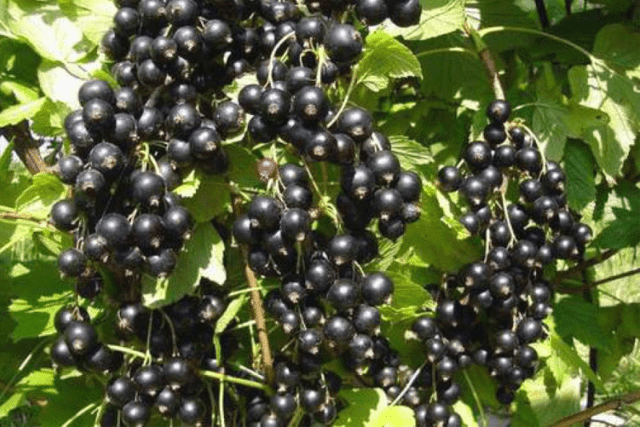
With sufficient watering, Ruben black currant fruits do not bake in the sun - the harvest is almost completely preserved
Berries can be eaten fresh, as well as used in preparations: preserves, jams, fruit drinks. They are frozen or ground with sugar in their own juice.
It is better to harvest them before flowering, when the maximum amount of nutrients accumulates in the tissues. The foliage is washed, dried, laid out in one layer. Dried in the open air, in the oven, microwave or electric dryer.
Disease and pest resistance
Ruben blackcurrant is resistant to American powdery mildew. There is a risk of rust damage. Therefore, in the spring, it is recommended to carry out treatment with any fungicide:
- Bordeaux liquid;
- copper sulfate;
- "Maksim";
- Fitosporin;
- "Hom";
- "Quadris".
When aphids, spider mites, kidney mites, sawflies and other pests are found, Ruben black currant bushes are treated with folk remedies:
- wood ash with laundry soap;
- infusion of tobacco dust, makhorka, onion husks, herbs and cloves of garlic;
- decoction of greens of yarrow, chamomile flowers.
If home solutions did not help, it is advisable to use special insecticides: Green Soap, Aktara, Inta-Vir, Fufanon, Decis, Iskra and others.
In the case of using chemicals for harvesting, you can start no earlier than 3-5 days (the waiting period can be specified in the instructions).
Advantages and disadvantages
Ruben black currant is not as common in Russia as domestic varieties. However, some summer residents managed to appreciate the pleasant taste, unpretentiousness and stable crop yield.
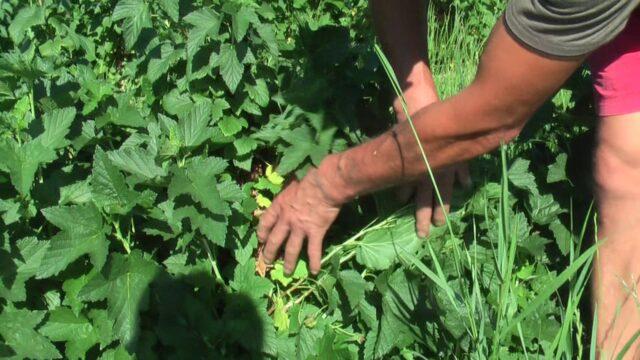
The Ruben variety is prized for its delicious berries and fragrant leaves.
Pros:
- fruits of medium and large sizes, presentation;
- early maturation;
- the leaves are suitable for tea;
- bushes grow up to 40-50 years;
- the yield is stable;
- high winter hardiness;
- can be grown in different regions;
- tolerates drought well;
- immunity to powdery mildew.
Minuses:
- affected by kidney mites, rust;
- the bushes are quite spreading;
- the yield is average.
Features of planting and care
Black currant Ruben prefers light, fertile soils in an open area (slight shading is also allowed). You can buy seedlings in the spring and plant in April, but it's better to do it in the fall. The optimal planting time is early October.
The soil is pre-prepared in spring or summer:
- the site is dug up;
- if the soil is depleted, add a bucket of humus for 2 m2;
- if the soil is clayey, cover 1 kg of sawdust or sand per 2 m2.
A few weeks before planting, it is necessary to dig a hole 60 cm deep (the distance between the bushes is 1.3–1.5 m), lay a 10-cm drainage layer of small stones and fill it with fertile soil. The landing algorithm is standard:
- Soak the roots of Ruben blackcurrant seedlings in a growth stimulator - "Kornevin", "Zircon", "Heteroauxin".
- Place the seedling in the hole at a 45 degree angle and straighten the roots.
- Dig in with fertile soil so that the root collar goes to a depth of 5–7 cm.
- Tamp the soil a little. Pour 10-15 liters of settled water.
- Mulch with peat, dry foliage, sawdust, hay for the winter.
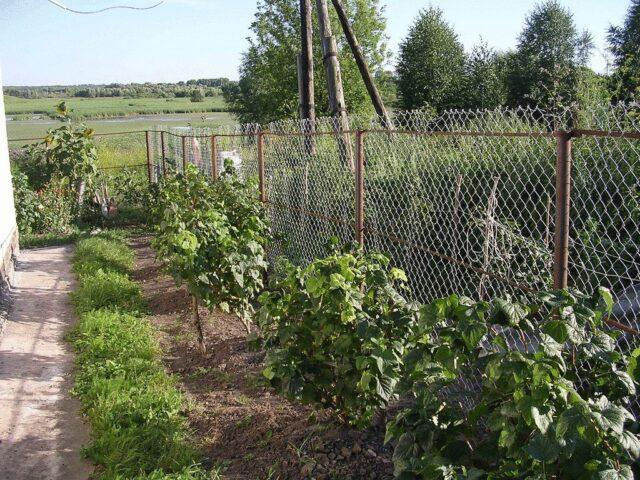
Saplings are placed at intervals of 1.3-1.5 m
Caring for Ruben black currant includes a few simple steps:
- Watering 2 times a month, 3 buckets per bush (in a drought - weekly).
- Top dressing - in the spring, urea (20 g per bush), in mid-June, complex fertilizer (30–40 g) or organic matter (infusion of mullein, droppings, cut grass). A similar composition is fed after harvest.
- Pruning: after planting, all branches are immediately removed up to the third bud. A sanitary haircut is done every spring.Remove frost-damaged, weakened shoots. In the first 3-4 years, a total haircut is carried out in the fall, leaving 3-4 healthy kidneys.
- Weeding, loosening - as needed.
- Rodent protection - wrap the currant trunk with a net.
- Shelter in regions with frosty winters: the roots are mulched, they are insulated with burlap on top. The ends are fixed on the ground or on the skeletal branches of the bush.
Thanks to this, the plant will direct nutrients to the berries, and not to the green mass.
Conclusion
Ruben black currant is an interesting variety that can replenish the collection of experienced gardeners and novice amateurs. It is a hardy crop that tolerates drought and other adverse conditions well. The harvest is easy to harvest both by hand and mechanized. The berries are distinguished by their attractive presentation and interesting taste.
Reviews with a photo about black currant varieties Ruben
